Archive
2021
KubaParis
“Session 2: Inner Sight”
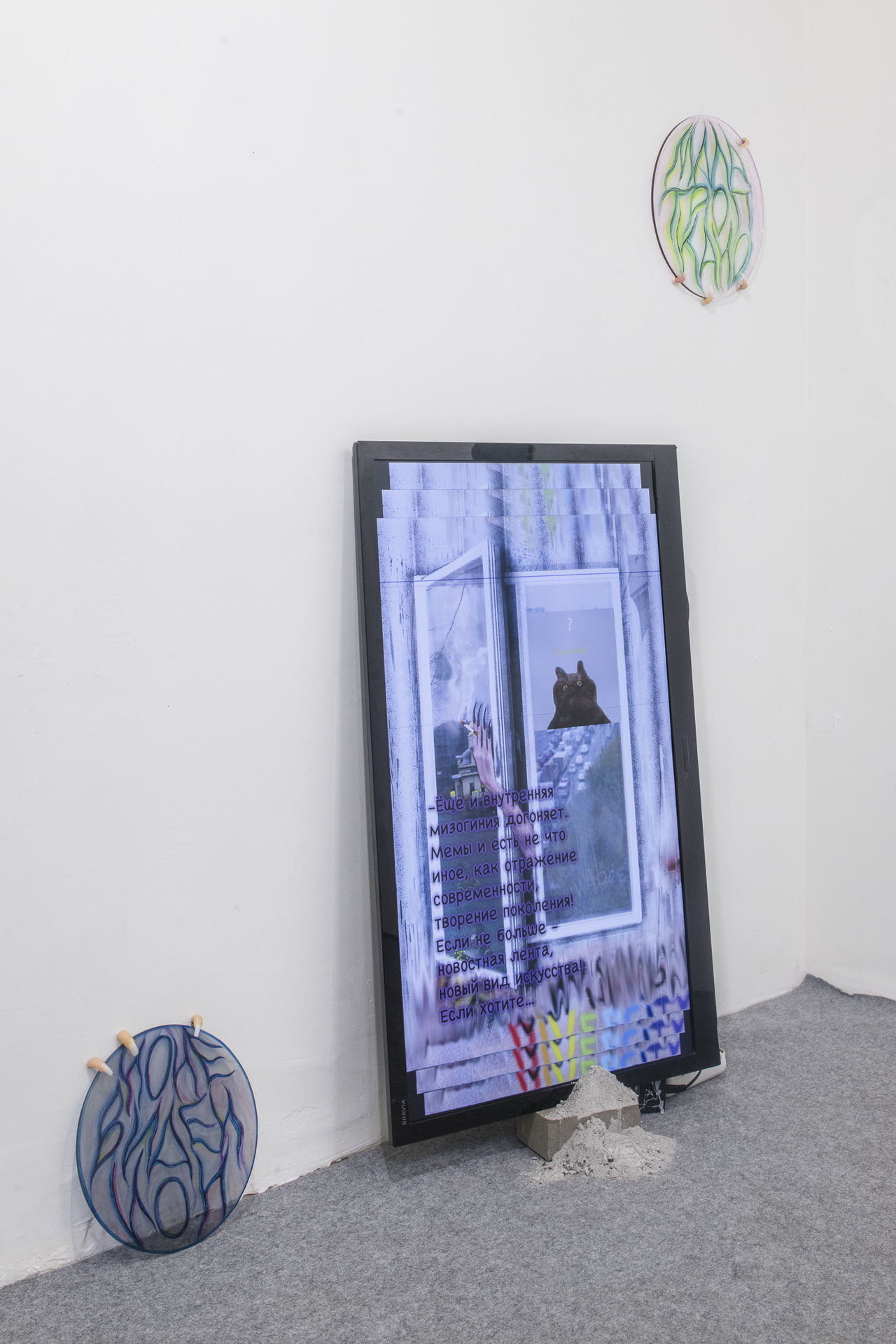


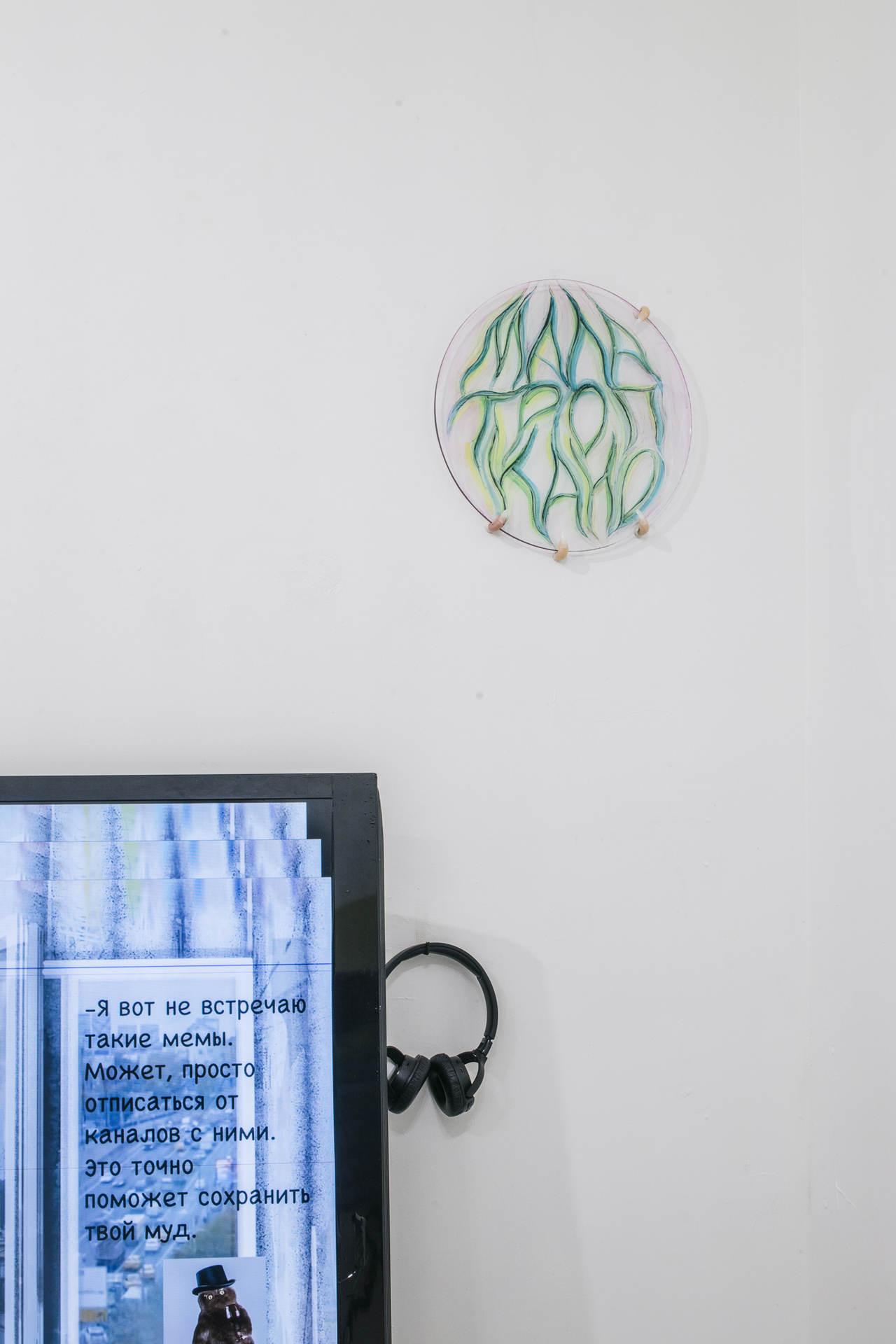
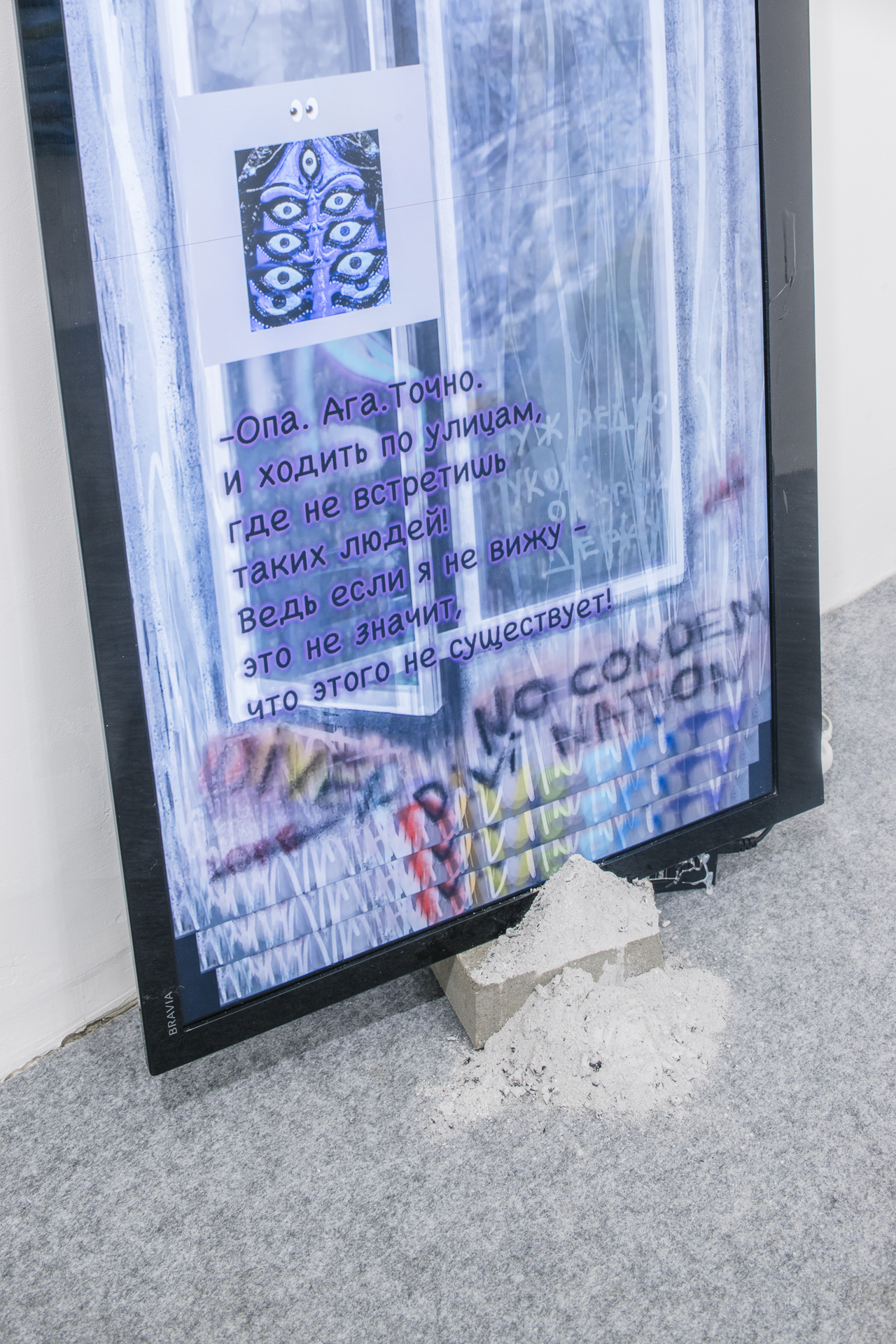
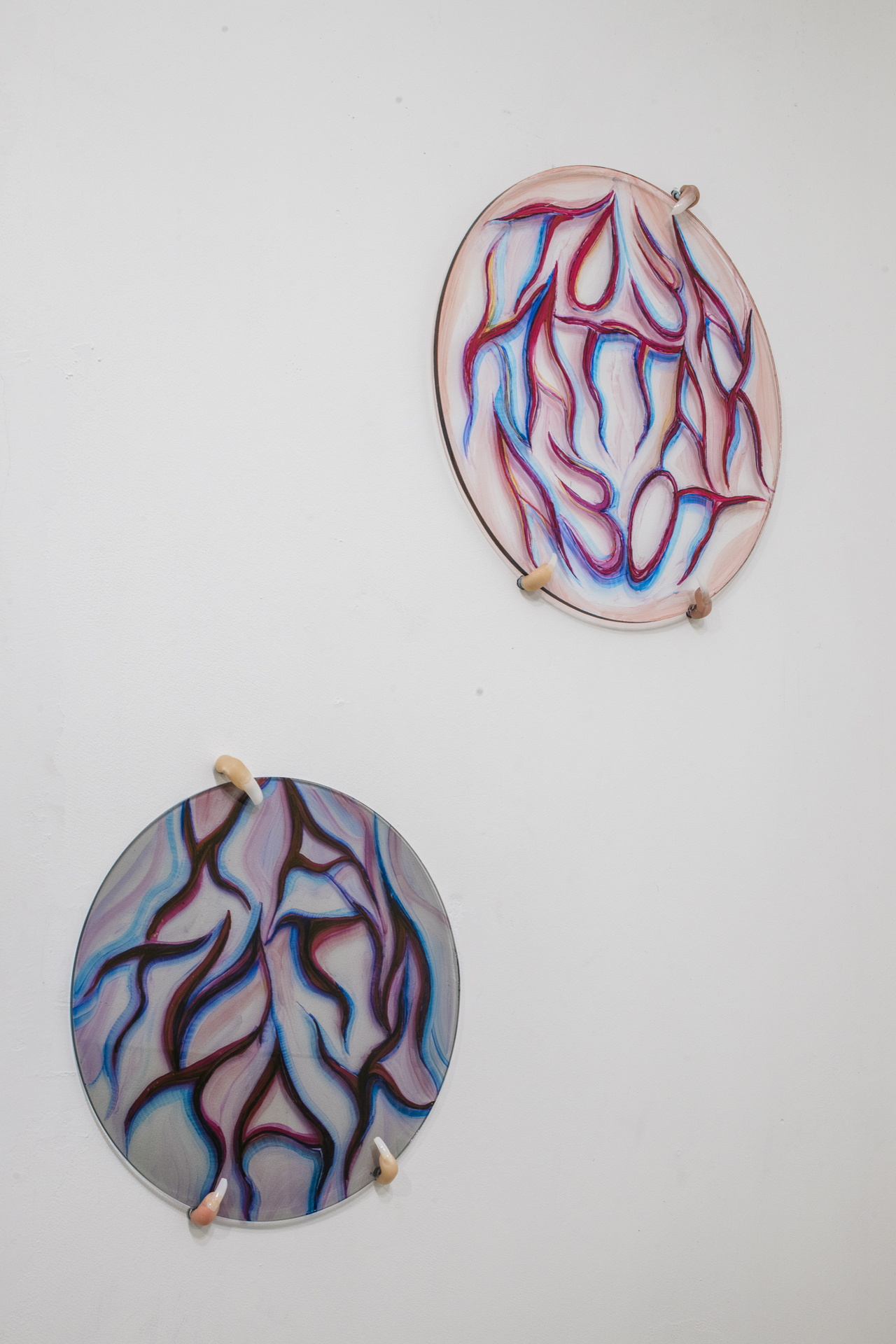
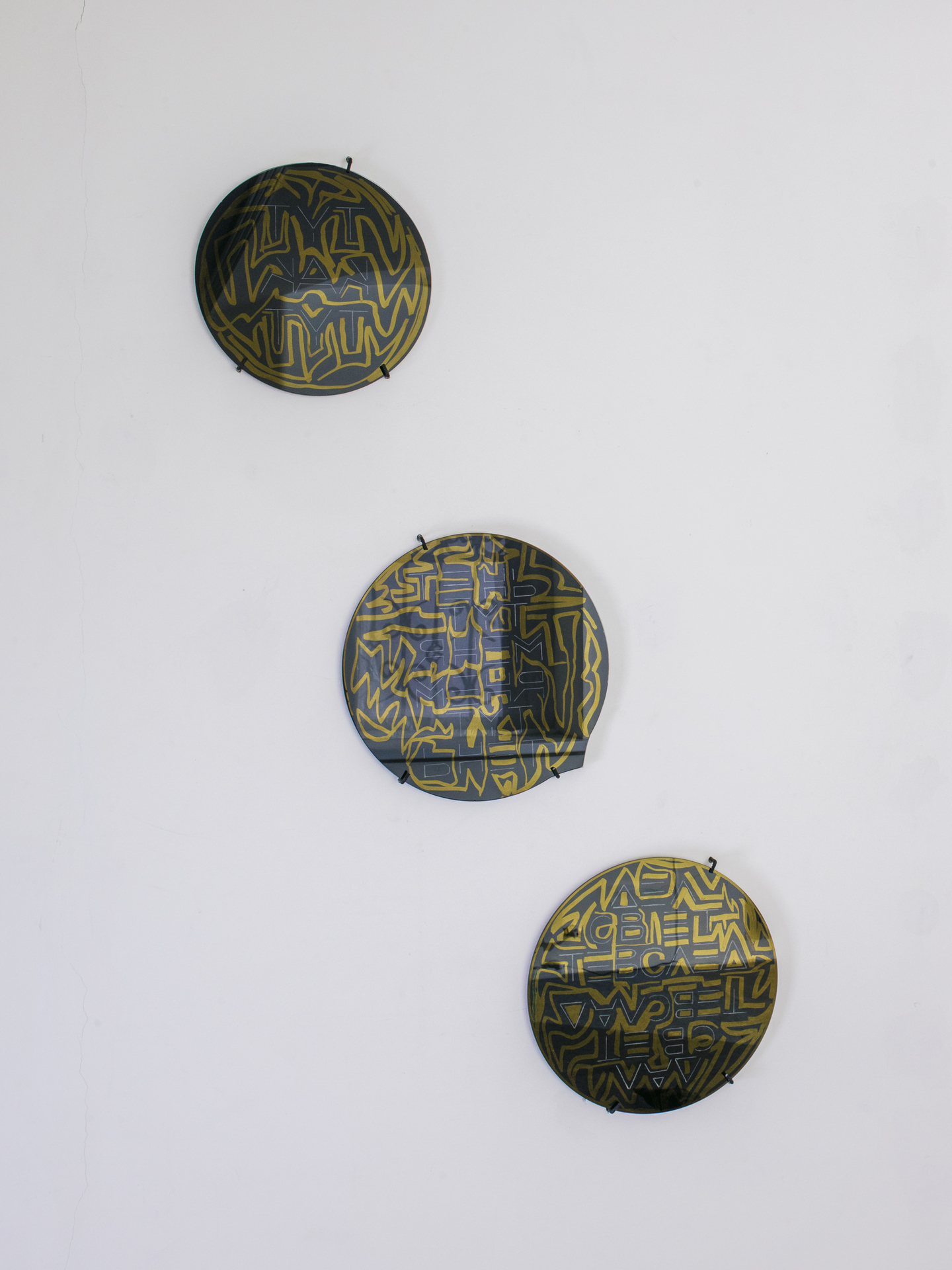
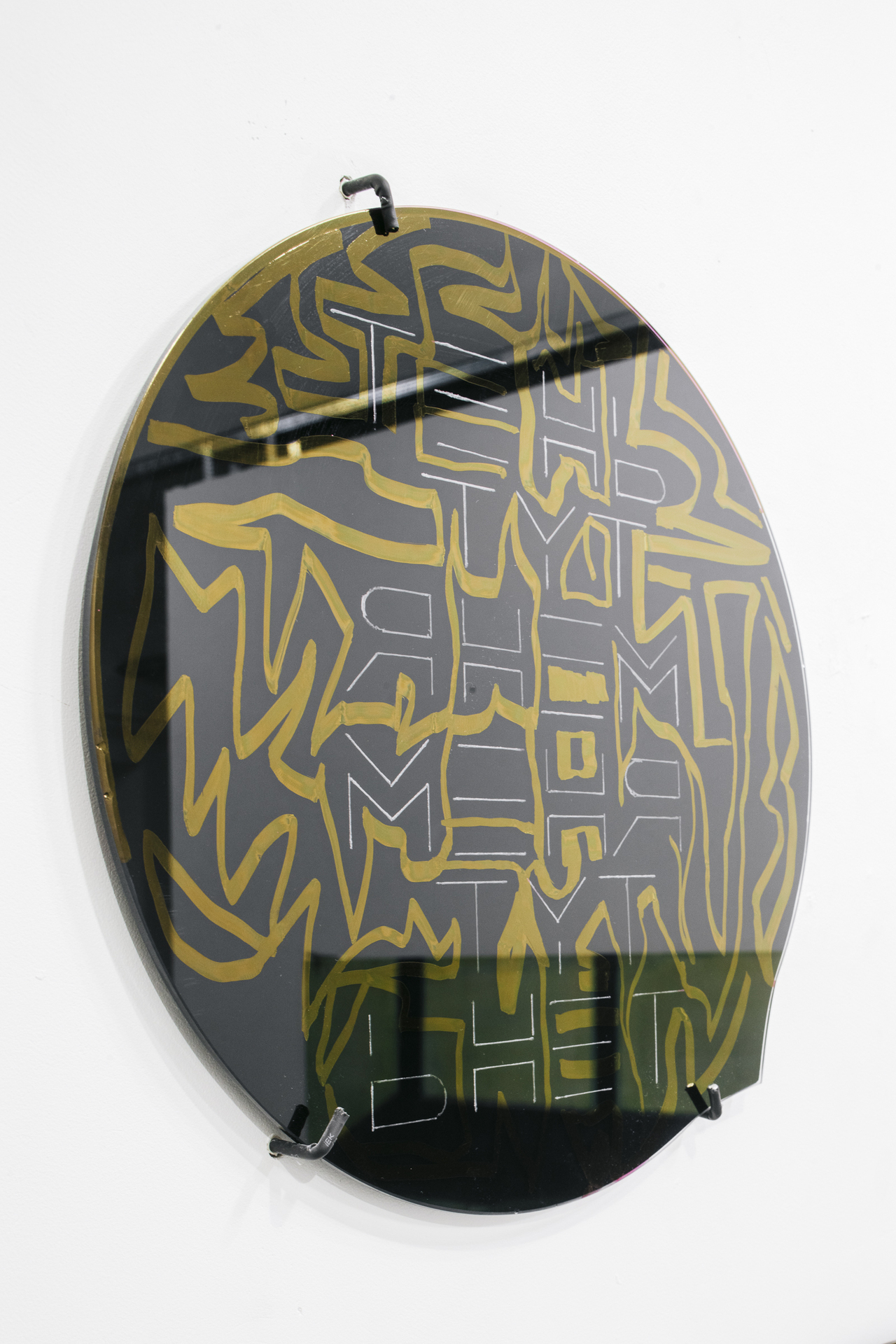
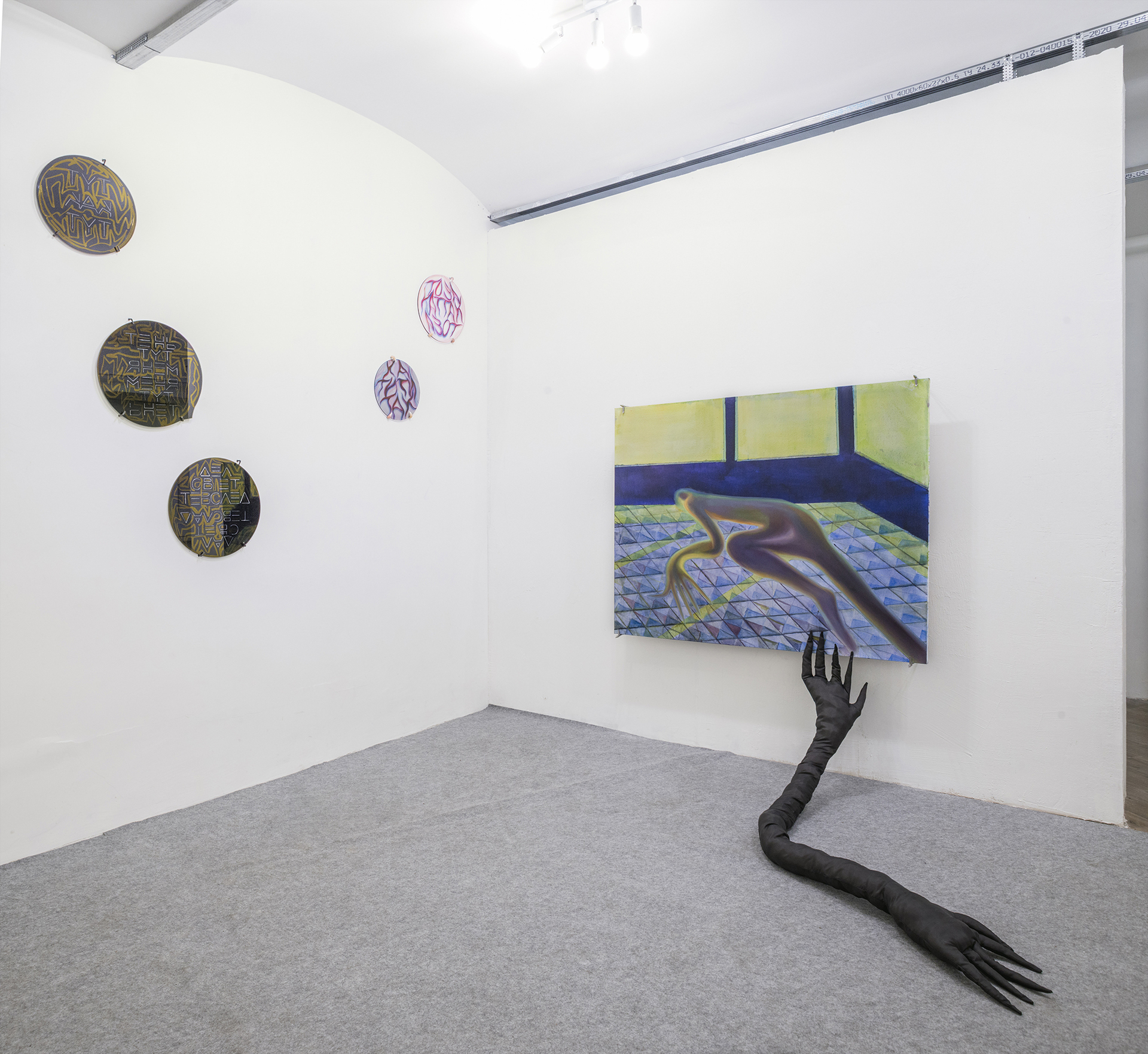
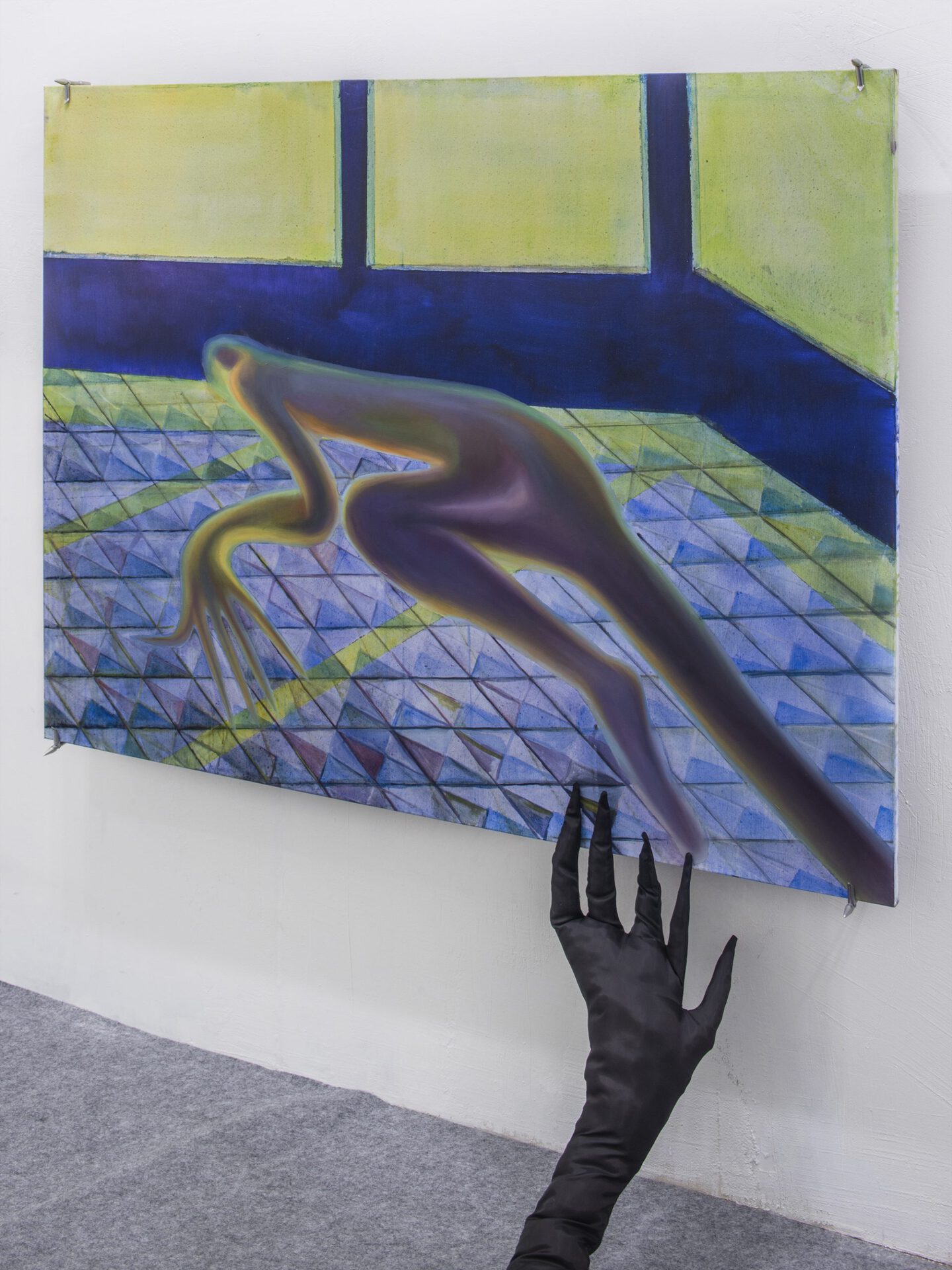

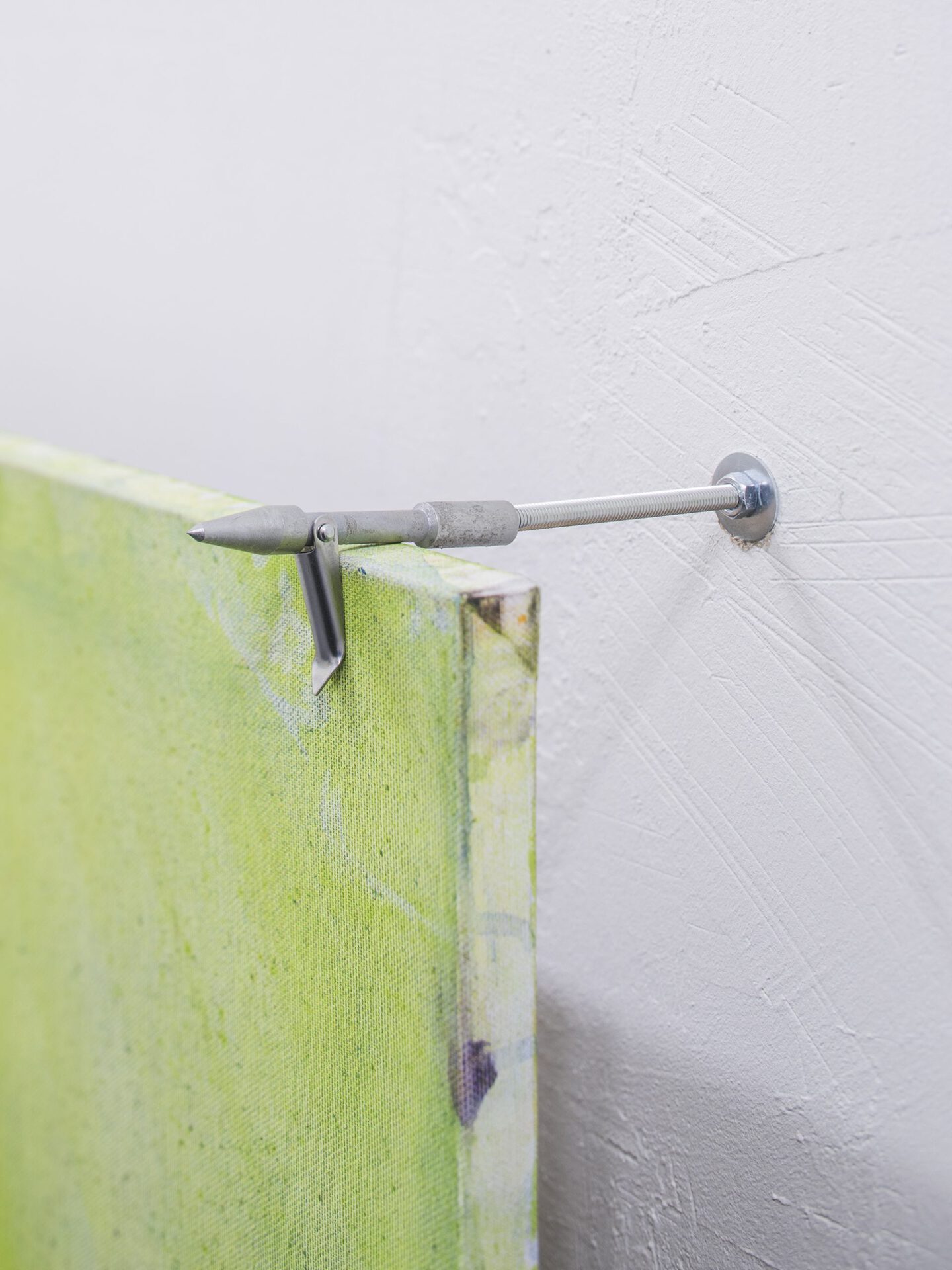






Location
Kerka galleryDate
01.12 –01.12.2021Photography
Grigory SokolinskySubheadline
“Session 2: Inner Sight” continues the series of projects by Olesia Lavrinenko and Sasha Gosmant about the transformation of the sensory spectrum in post-digital reality. The focus of the project is “looking inside”: the analysis of internal impulses and reactions caused by interacting with the external environment and diverse language systems. Artists start a dialogue about the fleeting phenomena of our online life that become deeply perceived, once in the field of vision of a predisposed recipient, and special intermediate states that arise as a result of affect or excessive immersion into the network.Text
Olesia Lavrinenko is an artist working with painting and soft sculptural forms. Her canvases, presented in the exposition of the project, appeal to intermediate states between sleep and reality, unconscious wandering and the search for oneself among “frozen” spaces. The characters, as if immersed in saturated colors and environments, find themselves in a meditative state of introspection: peering into watchful voids, they seem to be looking for their missing shadows and reflections. The results of the characters' self-immersion distort the reality around them: under their, painted with digital colors, perception, the world becomes oversaturated and "overexposed", and the viewer plunges into a field full of glow of the new mythologemes.
Daria Epine
In the second session of double shows with Olesia Lavrinenko, Sasha Gosmant's part has to do with the internet impact on the so-called ‘physical reality’ that creates text meanings and conflicts between written word and image. Experimenting with various forms of art, she shows us the very essence of post-internet discourse, which almost never concentrates on a single medium, turning different aspects of forms and shapes on the screen into ‘touchable reality’. Phenomenons based on the mix of spoken and visual meanings and shapes become the main characters for the artists narratives, competing for the domination of the image over the text.
The ‘Nichose’ (‘Wow’) video features both a real and an imaginary mocumentary dialogue with a boy dreaming to become a cat soon, a dialogue about the role of the new information unit and its impact on the society. How much do sexist memes divert the new generations of users away from the progressive gender agenda? This question gains crucial relevance with the uprising of the alt-right, 4chan, and the overall conservative attitudes online. The speaker with their queer identity sees no danger in this, waving it away 'boomer style' because they don't want to consider another threat coming from multiple complicated sources.
The series of glassworks with painted calligraphical texts studies the nature of palindrome and its shapeshifting form (when reading the phrase backwards produces a new meaning). It can be viewed as a visual exercise in a tondo shape, but as soon as the viewer gets the key, everything starts to make sense, and the rules totally change. The way of writing reminds of metal band album covers. On the one hand, that makes reading it harder, but on the other, being put in a circle, it creates such a trajectory of sight that its backward course is optimized when provided with the key. The texts of the palindromes and the shapeshifters are found somewhere between the magical and the profane, between physics theories and parascientific practices.
It is the place where magic and science meet where the image of this sculpture exists: a levitating entity that uses all the power of the school Physics course and demonstrates the connection between the electromagnetic waves with the entry points for various conspiracy or occult theories. A similar metaphorical connection is found between the magical gnosis and the perception of the post-information society. Hence the image of the sculpture that somewhat reminds of the All-Seeing Eye of Sauron that watches every user entitled with certain access rights and the ability to watch back. That eye reminds the viewer of the topic for the second exhibition: the topic of sight, and optics. It's about digital dualism and post-internet discourse where almost nothing is impossible, and opportunities are created and destroyed by users themselves; users that are rarely concerned with the common good.
Andrey Parshikov
Daria Epine, Andrey Parshikov